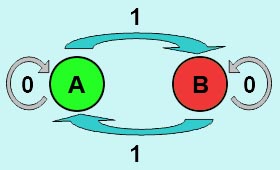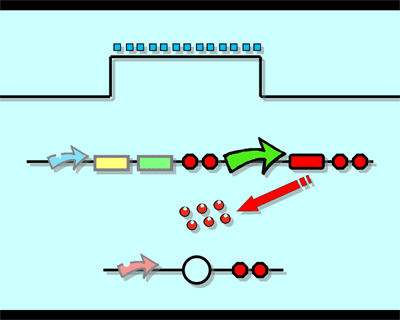Tianjin/FLIP-FLOP
From 2007.igem.org
Lovecarrot (Talk | contribs) (→Design) |
Lovecarrot (Talk | contribs) |
||
| Line 33: | Line 33: | ||
==Experiment== | ==Experiment== | ||
| + | |||
| + | |||
| + | <font size="3" color="#0000CC">2.<font size="3" color="#0000CC">Ligation Strategy and Parts Reservior</font> | ||
| + | <br> | ||
Revision as of 11:14, 25 October 2007
Design"Flip-flop" is the common name given to two-state devices which offer basic memory for sequential logic operations. Flip-flops are widely used for digital data storage and transfer as well as in banks called "registers" for the storage of binary numerical data. Based on the conception of "Flip-flop" and synthetic biology, we designed the Genetically RS FLIP-FLOP whose output signal is regulated by additional input signal. Besides this, we modulate the performance of Genetically RS FLIP-FLOP to optimize our original design. 1.Introduction to the logic rules of our flip-flop
|
Modeling1.Construction of Mathematical Model 2.Model Result
|
Experiment2.Ligation Strategy and Parts Reservior
|

